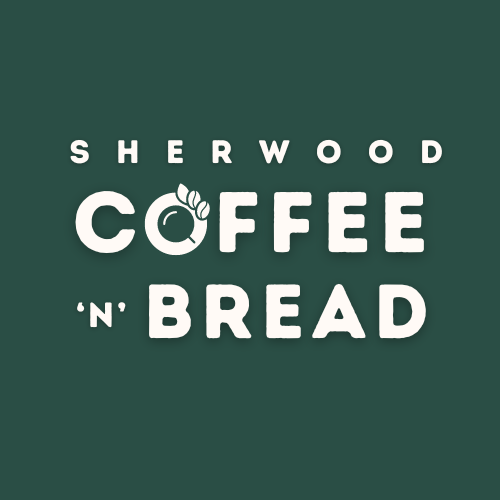
Baking Barbari Bread in a Brick Oven - Step-by-Step Recipe
Share
Barbari Bread has always been one of those traditional recipes that fascinates me. There’s something special about its thick, crispy crust and soft, airy interior, topped with a blend of sesame and nigella seeds. When I first set out to make Barbari Bread, I knew it would be a challenge, but I was eager to master this Persian flatbread, especially in my beloved brick oven. Here’s how the journey unfolded.

Ingredients
For the Dough:
- 500 g all-purpose flour
- 350 g lukewarm water
- 2 teaspoons instant yeast
- 2 teaspoons salt
- 1 teaspoon sugar
- 1 ½ tablespoons olive oil
- 2 tablespoons white sesame seeds
- 2 tablespoons nigella seeds or black sesame seeds
For the Glaze:
- 1 tablespoon all-purpose flour
- ⅓ cup water
- ½ teaspoon sugar
- 1 tablespoon baking soda
Preparing the Dough: The Start of the Journey
It all begins with the dough - simple ingredients, but when combined correctly, they create something extraordinary. I started by mixing lukewarm water with a bit of sugar, then sprinkling in the instant yeast. Watching the yeast come to life always feels like the start of something special. After 5 minutes, it was frothy and ready to go.
I then added the flour and salt, mixing everything together until the dough began to take shape. Kneading is where the magic starts to happen. As I worked in the olive oil, the dough transformed - soft, smooth, and elastic. There’s a rhythm to kneading, a connection with the dough that makes you feel part of a long tradition of bread-making.
First Rise: Anticipation Builds
Once the dough was smooth and elastic, I placed it in a lightly oiled bowl, covered it, and set it in a warm spot to rise until it double in size (1-2 hours). This part of the process always fills me with anticipation. Watching the dough double in size is like watching your efforts take shape, promising something wonderful to come.
Shaping the Barbari Bread: Bringing Tradition to Life
After the dough had risen, it was time to shape it. I punched down the dough to release the air bubbles, then divided it into two portions. Each portion was then shaped into a round ball and allowed to rest on a floured surface for about 20-40 minutes. This rest period, known as the second rise, lets the dough relax, making it easier to shape into the traditional oval loaves.

After the second rise, I took each dough ball and gently stretched and shaped it into an elongated oval loaf. Then, I pressed my fingers into the dough to create deep, parallel grooves along the top, which are characteristic of Barbari Bread.

Preparing the Glaze: The Secret Touch
While the dough rose, I turned my attention to the glaze. This mixture of flour, water, sugar, and baking soda might seem simple, but it’s the secret to Barbari Bread’s distinctive crust and color. I whisked the ingredients together over medium heat until it thickened, then set it aside to cool. The glaze is what gives Barbari its golden, glossy finish and that satisfying crunch when you take your first bite.

Baking in the Brick Oven: The Moment of Truth
Now came the part I’d been waiting for - baking the bread in my brick oven. I preheated the oven to a high temperature, letting the bricks absorb the heat. There’s nothing quite like the way a brick oven bakes bread - the intense, even heat creates a crust that’s crisp and golden, while the inside stays soft and tender.
I carefully transferred the loaves to the preheated oven, feeling the heat radiate from the bricks. The smell that filled the air as the bread baked was incredible - earthy, warm, and inviting. After about 15-20 minutes, the loaves were golden brown, with a beautiful, crackling crust.

The Sound and Smell of Success
As I pulled the loaves from the brick oven, the satisfying sound of the crust crackling filled the air - a telltale sign of a perfect bake. The aroma was equally enchanting, with the scent of toasted sesame seeds mingling with the rich, earthy smell of freshly baked bread. It’s these small sensory details that make the experience of baking Barbari Bread in a brick oven truly unforgettable.

The Final Result: A Taste of Tradition
When I pulled the Barbari Bread from the oven, I couldn’t help but feel a sense of accomplishment. The bread was perfect - crisp on the outside, soft on the inside, with those classic grooves and a glossy, golden finish. Tasting it was like connecting with a tradition that spans centuries, and knowing it came from my own hands made it even more special.

Baking Barbari Bread in a brick oven has been a journey, one that connects me to the rich traditions of Persian baking. Whether you’re enjoying it with cheese, herbs, or simply on its own, this bread brings a taste of history and culture to the table. And if you’re interested in experiencing this for yourself, I’d love to share the process with you in one of our Flatbread Classes at Sherwood Coffee 'n' Bread. There’s something truly magical about baking in a brick oven, and I’d be thrilled to help you discover it.
